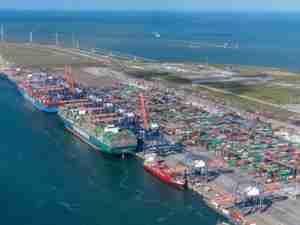Port Hedland’s iron ore exports to China drop 7% in September
By: Reuters | Oct 07 2014 at 06:55 PM | Ports & Terminals
Australian shipments of iron ore to China from Port Hedland, which handles about a fifth of the world's seaborne trade, fell 7 percent in September from a record high in the previous month amid a further drop in prices, port data showed.
Top iron ore consumer China's appetite for the steelmaking raw material has weakened amid a slowdown in Chinese economic growth and a sharp downturn in its property sector, weighing on iron ore prices.
Shipments from the port to China retreated to 29.77 million tonnes last month from the 32.03 million-tonne record set in August, according to the Pilbara Ports Authority.
The decline coincides with iron ore's .IO62-CNI=SI biggest monthly price loss over September since May, dropping nearly 12 percent to end the month at $77.50 a tonne. The price has since edged up to $78.90 a tonne.
Over the same month last year, when iron ore sold for over $130 a tonne, shipments climbed by 710,000 tonnes to 22.97 million.
Despite the price erosion, BHP Billiton this week earmarked $3.25 billion to add 20 million tonnes to the market on top of its existing expansion target of 270 million tonnes a year, capitalising on a declining cost base.
BHP iron ore division head Jimmy Wilson said production costs excluding freight and royalties would drop by 25 percent to under $20 a tonne, as it aims to overtake Rio Tinto as the lowest-cost supplier to China.
Fortescue Metals Group, which also uses Port Hedland to ship up to 155 million tonnes annually, is looking to make more incremental increases to output.
On July 1, the Port Hedland Port Authority amalgamated with the port of Dampier, creating what it says will be the largest bulk export tonnage port in the world.
Dampier port is one of two in the Pilbara iron ore belt used by Rio Tinto. The other is Cape Lambert.
Overall iron ore shipments from Dampier dropped 10 percent in September to 12.26 million tonnes versus the previous month, according to the Pilbara Ports Authority, which did not break down Dampier cargoes by destination. (Reuters)










